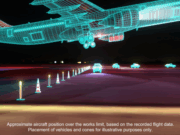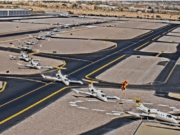The U.S. National Transportation Safety Board (NTSB) released a preliminary report today on the May 13 fatal midair collision of two sight-seeing airplanes in Alaska, citing that crash and two other recent accidents in its call for stronger safety controls for for-hire flights.
The collision between a deHavilland DHC-2 Beaver and a deHavilland DHC-3 Turbine Otter occurred seven mi (11 km) northeast of Ketchikan, Alaska. The crash killed all four passengers and the pilot of the DHC-2 and one passenger in the DHC-3; nine passengers in the DHC-3 were seriously injured, and the pilot received minor injuries. The DHC-2 was destroyed in the collision, and the DHC-3 was substantially damaged.
Both airplanes were being operated under U.S. Federal Aviation Regulations Part 135, which governs operations of business and charter flights. The NTSB has called for stronger safety measures for Part 135 aircraft and placed the issue on its 2019–2020 Most Wanted List of transportation safety improvements.
In issuing the Most Wanted List, the NTSB said that Part 135 operators should “implement safety management systems, record and analyze flight data and ensure pilots receive controlled flight into terrain avoidance training.” Today, in announcing publication of the preliminary report, the board noted that major passenger airlines have achieved a significant safety improvement since they adopted these measures.
The other two accidents cited by the NTSB were the April 29 crash of a Robinson R44 in Kailua, Hawaii, which killed both passengers and the pilot, and the Tuesday crash of a DHC-2 near Metlakatla, Alaska, which news reports said killed the pilot and passenger. (A preliminary report on the Metlakatla crash is not yet available.)
“Each crash underscores the urgency of improving the safety of charter flights by implementing existing NTSB safety recommendations,” NTSB Chairman Robert Sumwalt said. “A customer who pays for a ticket should trust that the operator is using the industry’s best practices when it comes to safety. And it shouldn’t matter if the operator has one airplane or 100. Travelers should have an equivalent level of safety, regardless of the nature of the flight for which they paid.”
The preliminary report on the Ketchikan midair collision does not discuss probable causes, which will be announced at the end of the investigation. The report says that both airplanes were equipped with floats, and both were based at the Ketchikan Harbor Seaplane Base and were returning to the base at the time of the collision, which occurred in visual meteorological conditions.
The report said the DHC-3 pilot told investigators that he had seen no conflicting traffic on his flight display and that, just before the collision, “he saw a flash from his left side and experienced a large, loud impact.” The airplane rolled right and pitched down, but he was able to flare just before impact. He then helped some of the passengers and some bystanders evacuate the airplane.
The DHC-2 broke up in flight.
Neither airplane was equipped with crashworthy flight recorders, and such equipment was not required. Several avionics components and personal electronic devices were recovered from the wreckage and turned over to the NTSB for examination.


